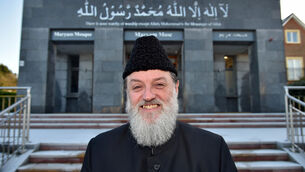Ireland of today is sharply divided as income disparity widens
It’s a bit like that old John Lennon song, isn’t it — another year over, a new one just begun.
Well maybe not another year, but another census publication (it’s actually called “This is Ireland”), and side by side with that, another EU-SILC report. They were both published in the last week, and they complement each other beautifully.
When you put them both together they paint a rather extraordinary picture. I get a headache from looking at figures, and there is page after page of figures in these two reports. But when you plough your way through them, only one conclusion is possible. We’re a country that has begun to change in all sorts of subtle, gradual ways, and in one way that is profound.
The one big way in which we have changed ought to be ringing alarm bells at every level of politics. It ought to be making headlines in every newspaper.
Because the only real fundamental change that has happened to us in the last few years is that we have become a more unequal country than we were before.
Oh sure, we’re all a bit poorer than a few years ago. Those at the top, just like those at the bottom, have all suffered. But the gap between those at the top and those at the bottom has increased dramatically. Those at the top have suffered a lot less than those at the bottom. That can only mean one thing — that the collapse in our economy, coupled with the public policy measures taken as a result, have hit poorer people hardest of all.
Let’s come back to that in a moment. Because as I said at the start, the other really striking thing about the census is how little has changed.
Take the floodgates, for example. You’d have to be of a certain age to remember them. But there was a time in Ireland when we were told, day in and day out, that the floodgates would open. That was going to happen the minute we passed a divorce referendum. Hello divorce, bye-bye Daddy.
Well, the census gives the lie to that. The rate of marriage breakdown in Ireland has increased, from 8.7% to 9.7% in the last five years. But that figure includes both divorced and separated people — and the separated people are in the majority. The number of divorced people in Ireland is actually less than 90,000 altogether, in a total population of more than 4.5 million.
On the other hand, the census shows that the number of people remarrying has more than doubled in the last nine years. And the total number of divorced people is a lot less than the number of middle-aged people who never married at all.
It’s not exactly a floodgate, is it? There’s a lesson in that, of course. The politics of fear are incredibly effective, and they have influenced the outcome of a great many of our referenda over the years, as well as inflaming passions and often dividing communities and even families. But they’re almost never based on the real truth, because the real truth in relation to social change is usually a lot more mundane and gradual.
And the census demonstrates all sorts of small, gradual changes, giving rise to a picture of subtle rather than radical transformation. The census, by definition, doesn’t count the people who have left Ireland in recent years. What it does show is that people are still coming home, and new people are still coming to live here — according to the census, there are people living in Ireland from an astonishing (and isn’t it fantastic?) 196 nationalities. Incidentally, it seems reasonable to infer that quite a few of these new Irish can speak Irish, since the total number of our population claiming to be able to speak the language (although they don’t speak it often) is also still going up.
We have a lot more families, a lot more children, and a lot more elderly people. After years of Irish families having less children, that trend seems to have stopped, and there are signs now that Irish families will start getting bigger again. Is that a by-product of austerity, I wonder? Not far short of a quarter of a million Irish families have one parent — in the vast majority of cases a mother. But here’s a couple of interesting facts (as opposed to the usual stereotype about lone parent families). Two fifths of lone parents were single and just under a quarter were widowed. 31.8% were separated or divorced, compared with 29.8% in 2006.
And we’re still Catholic, despite all the controversies of recent years — especially in Offaly, which boasts the lowest numbers of non-Catholics in the country. And Muslims constitute the largest non-Christian group in Ireland now — I’m guessing that’s not something the social analysts would have predicted a decade or so ago.
Mind you, the number of people reporting themselves as having no religion at all is the largest single group, after Catholics. In the last five years the number of people professing no religious belief has grown by 50%, and now constitutes a population of more than a quarter of a million.
There’s a lot more meaty detail in the census of course — enough to keep analysts and anoraks poring over it for months. But the census doesn’t measure income. For the most up to date account of that, we need the Survey on Income and Living Conditions, published in the same week as the census.
JUST look at some of these facts. From page 11, under the heading “Decile Analysis”, it says “Those in the lowest income decile experienced a increase in equivalised disposable income of more than 26% while those in the highest income decile experienced an increase in income of more than 8%.” Translated into English, and allowing for the fact that “deciles” are often a bit rough around the edges, that means that in the last year (in just one year!), the best-off 10% of our population saw their income go up, and the poorest 10% of the population saw a dramatic fall in their income.
And we’re talking about disposable, after-tax income here — the sort of income that pays for food, heating, clothing (and household charges, incidentally).
So it may not be surprising that there has been a huge increase, from 17% of the population to 23% of the population, in what is known as the deprivation rate. The deprivation rate applies to people who simply cannot afford some of the basics of a quality of life — like adequate protein, or decent shelter, or appropriate clothes.
But what is surely surprising, if not shocking, is that in one year the gap between rich and poor has grown so rapidly. A year ago, the highest-earning fifth of our population — the top 20% — earned 4.3 times what the lowest earning 20% got. That ratio is now 5.5.
So now we know. We’re not just a slightly growing, slightly changing country. We’re becoming a deeply divided country. And austerity, aimed at those least able to defend themselves, is a key reason. We need to open our eyes to that, and quickly.














